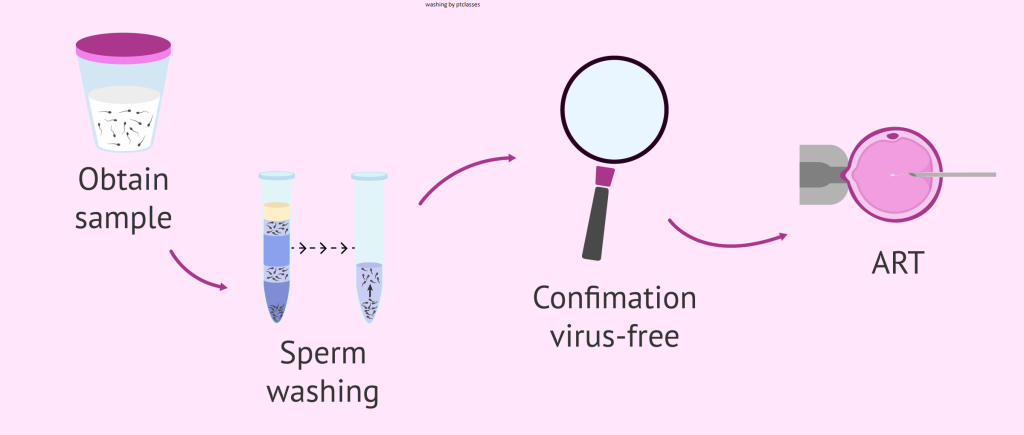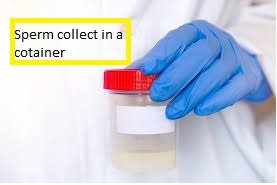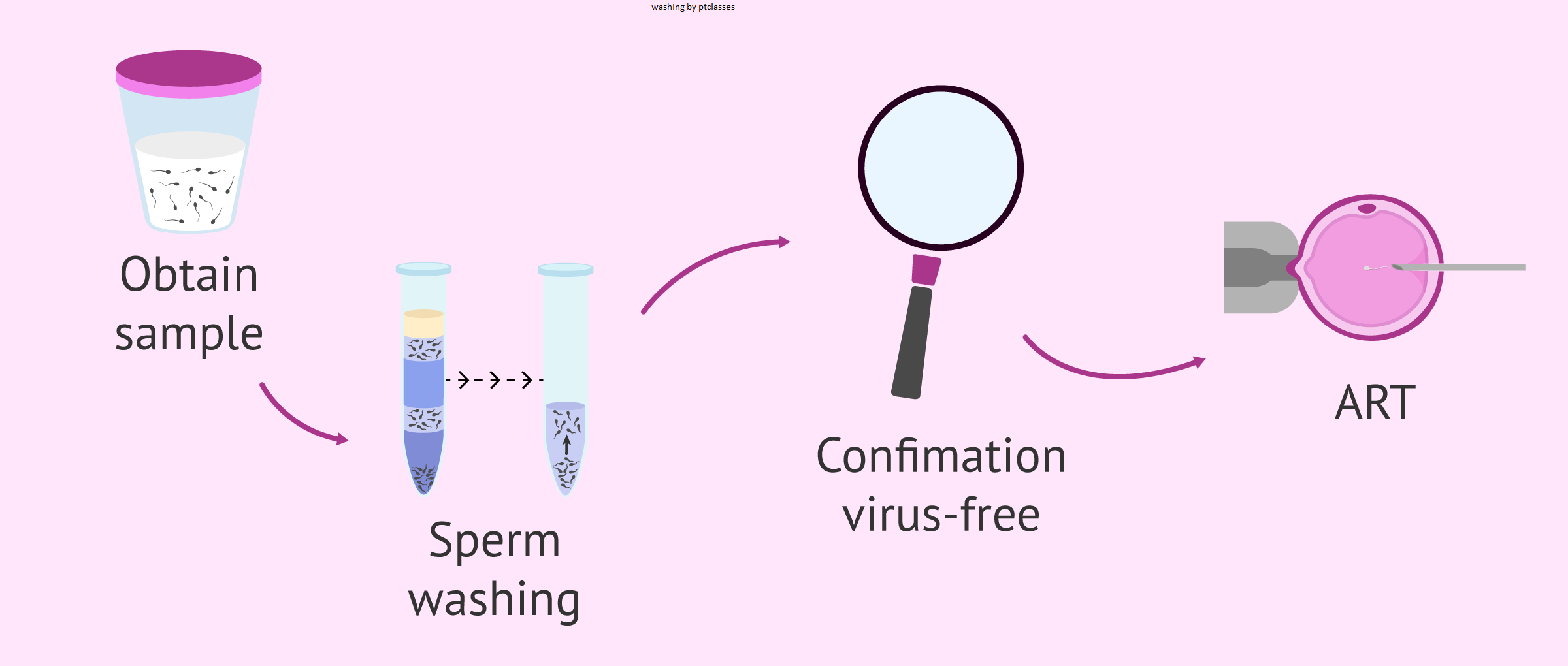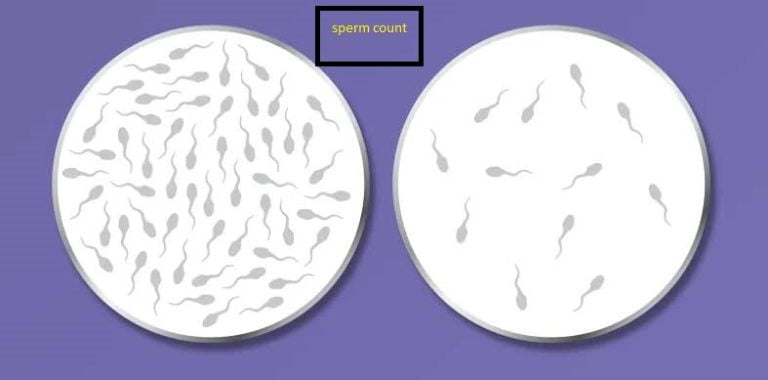
Table of Contents
INTRODUCTION OF SPERM WASHING
- Artificial insemination is the first option treatment for infertile couples.
- Sperm washing is one technique used for artificial insemination required in such cases. Artificial insemination requires the selection of normal ejaculated spermatozoa before the performance of the treatment.
- It is necessary to remove other components of seminal fluid such as leucocytes, mucus and seminal plasma containing components such as prostaglandins, proteases, enzymes, mucoproteins, antibodies, and organic and inorganic components.
- Washed normal sperms are used for Intrauterine insemination (IUI) or in-vitro fertilization (IVF). Various types of sperm wash techniques are:
- 1) Basic sperm wash,
- 2) Density gradient centrifugation (premium wash)
- 3) Swim-up technique.
- Importance
- Requirement
- choice of method
- Basic sperm wash method
- swim up method
- Density gradient centrifugation
- Procedure
Importance:-
- Leucocytes present in seminal fluid produce harmful reactive oxygen species. Similarly, various other components of seminal fluid (such as prostaglandins) may have adverse effects on fertilization after IUI or IVF.
- Hence, normal sperm are selected by sperm washing technique. Sperm washing is beneficial in the case of the following specific reasons.
- Unexplained infertility
- Male factor infertility
- Male with anti-sperm antibodies
- Women with endometriosis
- To decrease the risk of HIV transmission by HIV-positive fathers (since HIV infection is carried by the infected seminal fluid rather than sperm
Requirement:-
- Freshly collected semen in a sterile container After liquefaction, a “Routine semen examination” is performed.
- Biological safety cabinet.
- Seitz filters.
- Round bottom and conical centrifuge test tubes with a test tube stand.
- Centrifuge.
- Commercially available modified sperm washing medium (pH 7.2-7.4): It contains the following components: Sodium chloride, potassium chloride, magnesium sulfate, potassium phosphate, calcium chloride, sodium bicarbonate, glucose, sodium pyruvate, sodium lactate, phenol red and bovine albumin (5 mg/ml).
- Buffer solution: It contains 21 mm HEPES and 4 mm sodium bicarbonate
After reconstitution in buffer solution, the sperm washing medium is filtered using a Seitz filter and aseptically processed. It is necessary to keep this medium at room temperature (25°C ± 5°C) for 30 minutes before use. Antibiotic supplementation may be added just before use.

choice of method:-
- For a semen sample with normal sperm count and motility, a basic wash or swim-up method is used.
- For a semen sample with poor sperm count and motility, the Density gradient centrifugation method is used.
Basic sperm wash method:-
1. Pipette of 2.0 ml liquefied semen aseptically around the bottom centrifuge tube
2. Add 2.0 ml sterile sperm washing medium and mix gently
3. Centrifuge at 300 g for 10 minutes
4. Remove supernatant and resuspend pellet in 1.0 ml sperm washing medium, mix gently
5. Centrifuge at 300 g for 5 minutes
6. Resuspend pellet in 1.0 ml sterile sperm washing medium
7. In the case of additional quantity of semen, repeat the steps 1-6
8. Perform sperm count on the washed sperm mixture and examine the motility of sperm. If satisfactory, use the sperm sample for IUI or IVF
swim up method:-
- By this method, the sperms are selected based on their rate of motility and capability to swim out of the seminal plasma.
- Pipette 1.0 ml liquefied semen aseptically in a found
- bottom centrifuge tube
- Add 1.3 ml sterile sperm washing medium and mix gently
- Place the tube in an inclined position at 45° and incubate at 37° for 30-60 minutes
- Place the tube in a vertical position and remove 1.0 ml supernatant aseptically
- In the case of the additional quantity of semen repeat steps 1-4
- Perform sperm count on the separated sperm mixture (supernatant fractions) and examine the motility of sperm. If satisfactory, use the sperm sample for IUI or IVF
Density gradient centrifugation:-
This method is used in the case of a semen sample with poor count and motility. By using a density discontinuous gradient, good quality sperms can be separated from semen plasma and other components of semen.
Additional Requirements:-
Commercially available ready-to-use “Stock density gradient medium” and “Isotonic sterile medium”. Antibiotic supplementation may be added just before use.
From the stock solution, the following two working solutions were prepared aseptically:
1 Working density gradient solution 1 (40% v/v): 4.0 ml of stock solution is mixed with 6.0 ml isotonic sterile
medium. Working density gradient solution 2 (80% v/v): 8.0 ml of stock solution is mixed with 2.0 ml isotonic sterile medium.
Procedure:-
- 1. Pipette 1.0 ml 40% (v/v) density gradient solution in a conical centrifuge tube
- 2. Add 1.0 ml 80% (v/v) density gradient solution 2
- 3. Add 1.0 ml liquefied semen
- 4. Centrifuge at 300g for 15 minutes
- 5. Remove supernatant and resuspend pellet in 5.0 ml sterile isotonic medium, mix g.ently and centrifuge at 200g for 10 minutes
- 6. Remove supernatant and resuspend pellet in 1.0 ml sterile sperm washing medium
- 7. In the case of the additional quantity of semen repeat steps 1-6
- 8. Perform sperm count on the final sperm mixture and examine the motility of sperm. If satisfactory, use the sperm sample for IUI or IVF
Does sperm washing increase chances of pregnancy?
yes after the sperm washing increase the possibility of pregnancy.


